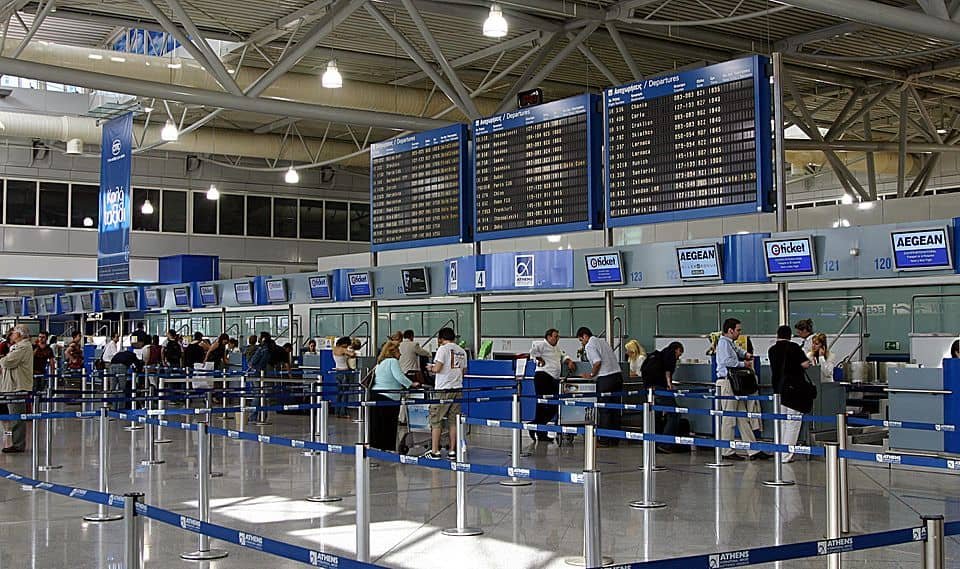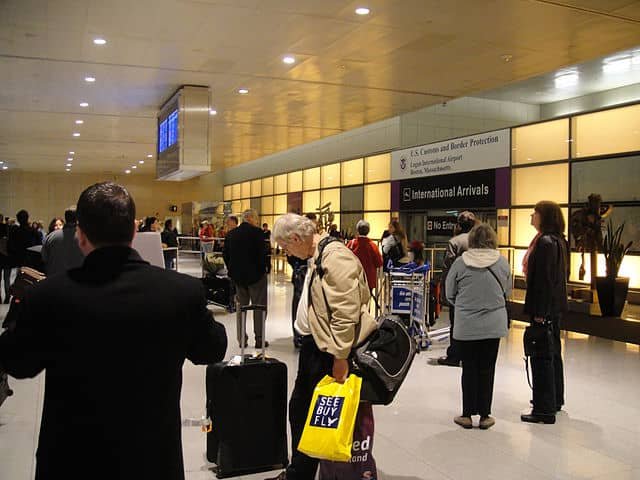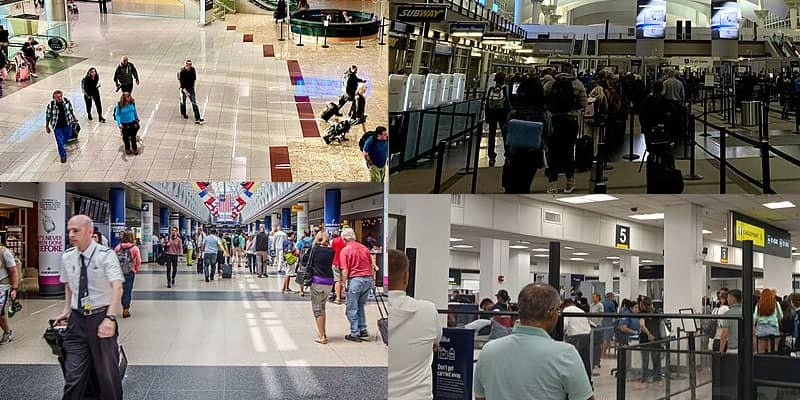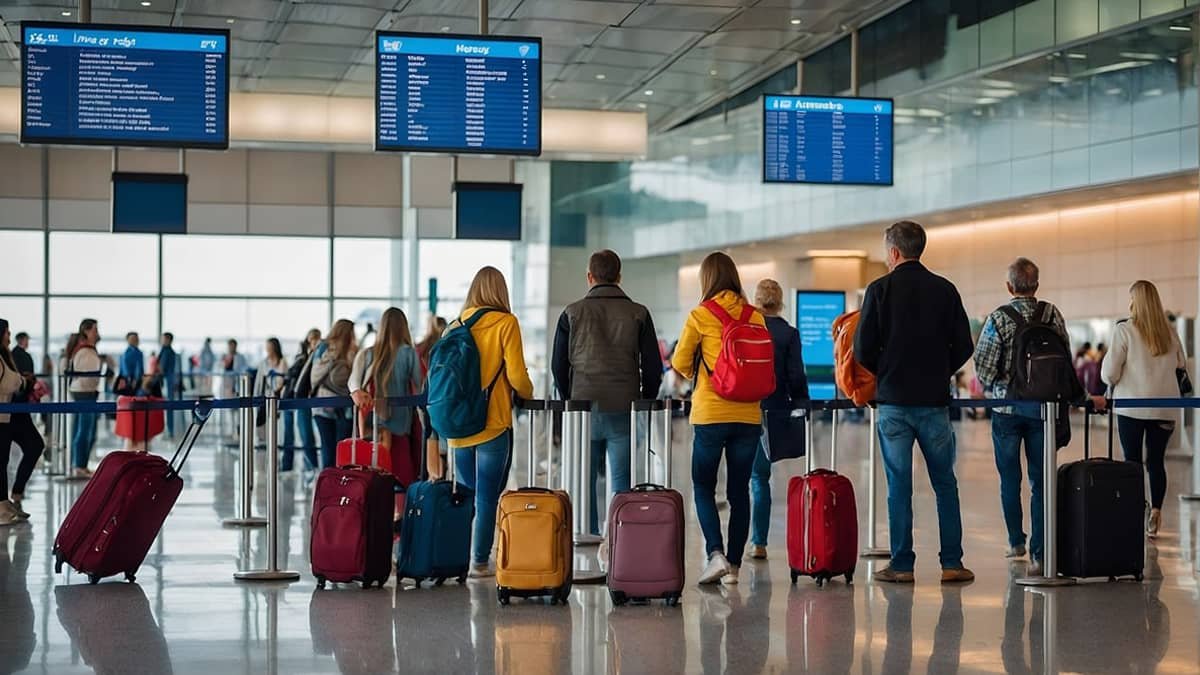List of Top 10 Busiest Airport in Greece

Greece, with its rich history, stunning islands, and vibrant culture, continues to attract travelers from around the globe. As tourism flourishes, the country’s airports have become vital gateways, handling millions of passengers annually. In 2024, Greek airports collectively served a record total of approximately 72.6 million passengers, up 14% compared to the previous year.
This explosive growth underscores Greece’s enduring appeal and the importance of efficient air transport infrastructure to support both domestic connectivity and international tourism. Below, we present a comprehensive overview of the top 10 busiest airports in Greece for 2024, highlighting their passenger traffic, key features, and the roles they play in facilitating travel to the mainland and islands.
1. Athens International Airport (ATH)
Passenger Traffic: 31,854,76
Annual Change: +13.1%
As the primary international gateway to Greece, Athens International Airport “Eleftherios Venizelos” (ATH) is by far the busiest airport in the country. Located approximately 20 kilometers east of central Athens, it serves as the hub for both Aegean Airlines and Olympic Air, in addition to accommodating numerous international carriers. In 2024, ATH handled over 31.8 million passengers, reflecting strong growth driven by post-pandemic travel demand and major events hosted in the capital.
Key Features:
- Terminals: Two main terminals (T1 for Schengen and T2 for non-Schengen and domestic flights).
- Facilities: Over 150 shops and restaurants, free Wi-Fi throughout, lounges for business and premium travelers, and extensive ground transportation options (metro, buses, taxis, and car rentals).
- Connectivity: Direct flights to all major European cities, North America, Asia, Africa, and the Middle East.
- Expansion Plans: Ongoing improvements include runway extensions and a new satellite terminal projected to further increase capacity and enhance passenger experience.
2. Heraklion International Airport (HER)
Passenger Traffic: 9,376,958 (2024)
Annual Change: +7.5%
Located on the island of Crete, Heraklion International Airport “Nikos Kazantzakis” (HER) is the second busiest airport in Greece. Serving the city of Heraklion and its surrounding regions, HER is a critical entry point for tourists visiting Crete’s archaeological sites (such as the Palace of Knossos), beaches, and resorts. In 2024, nearly 9.4 million passengers passed through HER, making it one of Europe’s busiest island airports during the summer peak.
Key Features:
- Terminals: A single modern terminal handling both international and domestic flights.
- Seasonality: Peak season runs from April to October, with numerous charter and low-cost carriers operating seasonal routes.
- Facilities: Retail outlets featuring Cretan products, duty-free shops, cafés, and car rental counters.
- Ground Transport: Frequent bus services to Heraklion city center (approximately 5 km away), taxis, and shuttle services to island resorts.
Suggested Read- List of Top 10 Busiest Airports in Germany
3. Thessaloniki International Airport (SKG)
Passenger Traffic: 7,381,064
Annual Change: +5.0%
Thessaloniki International Airport “Makedonia” (SKG) ranks third in the country, serving Greece’s second-largest city. Situated about 13 kilometers southeast of Thessaloniki’s downtown, SKG is the primary hub for northern Greece and a gateway to the Halkidiki peninsula. In 2024, it accommodated over 7.3 million passengers, reflecting steady growth driven by both business travel and an increasingly vibrant tourism scene.
Key Features:
- Terminals: One terminal divided into Schengen and non-Schengen sections.
- Connectivity: Regular flights to major European capitals, and increased connectivity to the Middle East and Russia.
- Facilities: Duty-free shops, local specialty stores, cafés, VIP lounges, and free Wi-Fi.
- Ground Transport: Express bus (OASTH) linking the airport to the city center in about 30 minutes, taxis, and private transfer services.
4. Rhodes International Airport (RHO)
Passenger Traffic: 6,921,748 (2024)
Annual Change: +12.7%
Rhodes International Airport “Diagoras” (RHO) on the island of Rhodes is the fourth busiest in Greece. Handling nearly 6.9 million travelers in 2024, RHO plays a pivotal role in bringing tourists to one of Greece’s most iconic Dodecanese islands, known for its medieval Old Town and pristine beaches.
Key Features:
- Terminals: A single terminal with separate areas for arrivals and departures.
- Seasonality: Substantial seasonal influx from April through October, driven by charter airlines from Europe.
- Facilities: Waterfront terraces overlooking the runway, restaurants serving local specialties, duty-free outlets, and souvenir shops.
- Ground Transport: Regular bus service to Rhodes town (approximately 14 km away), taxis, and car rental options.
5. Corfu International Airport (CFU)
Passenger Traffic: 4,343,748
Annual Change: +6.8%
On the island of Corfu, Corfu International Airport “Ioannis Kapodistrias” (CFU) ranks fifth nationally. Serving as the gateway to Greece’s northwestern Ionian islands, CFU processed over 4.3 million passengers in 2024, reflecting strong interest in Corfu’s lush landscapes, historic landmarks, and beaches.
Key Features:
- Terminals: A compact terminal building with essential services ideal for short queues.
- Seasonality: Peak traffic during summer months, with direct flights connecting to multiple European cities such as London, Milan, and Berlin.
- Facilities: Duty-free shopping, cafés featuring Corfiot cuisine, and a small lounge.
- Ground Transport: Taxis and buses to Corfu town (~2 km) and nearby resorts; ferry services to Paxi and Paxos islands.
Explore More- List of Top 10 Busiest Airports in Canada

6. Chania International Airport (CHQ)
Passenger Traffic: 3,952,126
Annual Change: +8.3%
Chania International Airport “Daskalogiannis” (CHQ), also on Crete, ranks sixth in Greece in terms of passenger traffic. Located about 14 kilometers east of Chania city, the airport processed nearly 4 million passengers in 2024, driven by tourists flocking to the region’s historical sites, Samaria Gorge, and scenic coastlines.
Key Features:
- Terminals: Modern terminal building accommodating both international and domestic flights.
- Seasonality: Significant summer peak; many seasonal charters arrive from European capitals.
- Facilities: Coffee shops offering Cretan delicacies, souvenir boutiques, and car rental desks.
- Ground Transport: Public buses run to Chania city (about 30 minutes), taxis, and organized shuttle services to popular beach resorts like Falassarna and Elafonissi.
7. Kos Island International Airport (KGS)
Passenger Traffic: 3,069,659
Annual Change: +3.9%
Kos Island International Airport “Hippocrates” (KGS) is situated just north of Kos town in the Dodecanese. In 2024, KGS welcomed over 3 million travelers, drawn by the island’s archaeological sites (including the ruins of the Ancient Agora), sandy beaches, and vibrant nightlife.
Key Features:
- Terminals: Single terminal for arrivals and departures.
- Seasonality: Peak season from May through September; British and German charter flights dominate summer schedules.
- Facilities: Duty-free shopping, cafés, and spacious outdoor seating areas.
- Ground Transport: Frequent public buses to Kos town (5 km), taxis, and motorbike rentals popular among visitors.
Explore More- Top 10 Busiest Airports in the Middle East
8. Santorini (Thira) International Airport (JTR)
Passenger Traffic: 2,877,122
Annual Change: +3.7%
Santorini International Airport “Thira” (JTR), serving one of Greece’s most photographed islands, ranks eighth. In 2024, it handled nearly 2.9 million passengers, many coming to experience the iconic caldera views, volcanic sands, and famous sunsets in Oia.
Key Features:
- Runway Constraints: A single short runway limits the size of aircraft, making many flights smaller gauge or regional jets.
- Seasonality: Extremely high seasonal fluctuation—summer months see up to 90% of the year’s traffic.
- Facilities: A compact terminal with cafés, souvenir shops, and an observation deck for watching landings against the caldera backdrop.
- Ground Transport: Buses connect the airport to Fira (about 6 km), taxis, and pre-arranged hotel shuttles.
9. Zakynthos International Airport (ZTH)
Passenger Traffic: 2,223,011 (2024)
Annual Change: +6.8%
Zakynthos International Airport “Dionysios Solomos” (ZTH) is the entry point to the Ionian island famous for its Shipwreck Beach (Navagio) and sea turtle conservation efforts. In 2024, roughly 2.2 million passengers passed through ZTH, largely during the summer months when charter flights from Europe are most active.
Key Features:
- Terminals: Basic but efficient terminal focused on quick turnaround of charter flights.
- Seasonality: Over 80% of annual traffic occurs between April and October.
- Facilities: Duty-free shop, small cafés, and car rental desks.
- Ground Transport: Taxis to Zakynthos town (4 km away), airport shuttle buses, and private transfers to coastal resorts.
10. Mykonos Island National Airport (JMK)
Passenger Traffic: 1,613,638 (2024)
Annual Change: +2.7%
Rounding out the top ten is Mykonos Island National Airport (JMK), which had over 1.6 million passengers in 2024. Known for its upscale nightlife and picturesque towns, Mykonos draws a cosmopolitan crowd. Its small airport area is often bustling during the high season.
Key Features:
- Runway Location: The runway sits on a narrow strip alongside a beach, making for dramatic takeoff and landing views.
- Seasonality: Extremely seasonal; from late April to early October, the airport accommodates multiple daily charter flights from major European cities.
- Facilities: Limited but sufficient: cafés offering light meals, outdoor seating overlooking the Aegean, and car rental counters.
- Ground Transport: Taxi services and shuttle buses connect the airport to Mykonos Town (5 km away), where ferries depart to Santorini and other Cyclades islands.
Analysis of Trends
- Seasonality and Tourism Impact
The Greek tourism season, typically from April through October, significantly influences passenger distribution across these airports. While Athens and Thessaloniki maintain relatively stable traffic year-round due to business travel and local demand, island airports such as Santorini (JTR) and Mykonos (JMK) experience over 80% of their traffic in just six months. - Post-Pandemic Recovery and Growth
The rebound from travel restrictions imposed during the COVID-19 pandemic has been remarkable. Athens International Airport’s 13.1% growth in 2024 (compared to 2023) indicates revived business and leisure travel. Island airports also report substantial increases, with Rhodes (RHO) up 12.7% and Chania (CHQ) up 8.3%. - Infrastructure and Expansion Efforts
To accommodate growing traffic, several airports have initiated expansion projects. Athens has embarked on a satellite terminal plan, while regional airports are improving aprons and passenger facilities. These upgrades aim to reduce congestion during peak months, improve safety, and enhance traveler experience.
Conclusion
The top ten busiest airports in Greece reflect the country’s dual identity: a bustling modern capital hub in Athens and a network of island gateways that cater to millions of tourists each year. With Athens International Airport leading with nearly 32 million passengers, followed by major island airports such as Heraklion, Rhodes, and Corfu, these airports not only serve as travel nodes but also as economic catalysts for regional development.
Looking ahead, continued investments in infrastructure, modernization of terminals, and improved ground transport links will be essential to manage increasing passenger volumes. As Greece further solidifies its position as a premier travel destination, these airports—each with unique characteristics and challenges—will remain at the heart of the country’s tourism-driven growth.
Whether traveling for business in Thessaloniki, exploring the ruins near Heraklion, or unwinding on the beaches of Corfu and Zakynthos, passengers can expect the Greek aviation network to keep evolving to meet their needs, ensuring that experiences both on the ground and in the air are seamless and memorable.
Image Credits- Athens Airport








